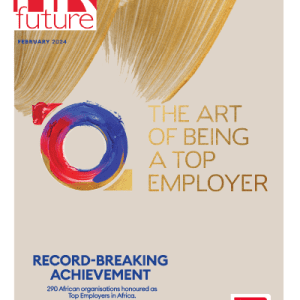Maximizing productivity is essential for any organization’s success. As a manager, you have the unique ability to influence and shape the workplace atmosphere. A high-productivity environment enhances efficiency and boosts employee morale and satisfaction. Here are some practical strategies to help you create such an environment.
Enhancing Engagement through Gamification
Incorporating gamification strategies in the workplace can be a powerful tool to boost employee engagement. Studies show that gamification can transform your workplace by creating an environment that is both challenging and rewarding. It involves using game design elements in non-game contexts, which can make mundane tasks more stimulating and enjoyable. By introducing leaderboards, achievement badges, and point systems, employers can motivate employees to strive for excellence while also fostering a sense of competition and camaraderie among team members.
When employees feel like participants in a game, they are more likely to experience a sense of achievement and recognition. Gamification not only provides instant feedback and acknowledgment but also helps set clear goals and objectives that employees can aim for. These motivational elements can lead to higher engagement levels, ultimately enhancing overall productivity and driving organizational success.
Understanding Employee Engagement
Employee engagement refers to the emotional commitment an employee has towards their organization and its goals. This commitment is reflected in the level of effort they are willing to put into their work. Engaged employees are not simply working for a paycheck or promotion; they care about their work and the company they work for, often going the extra mile to achieve corporate objectives.
Recent studies suggest that organizations with highly engaged employees often see a substantial increase in performance and profitability. Engaged employees are more productive, showing lower absenteeism and higher retention rates. They foster better customer interactions, contributing to enhanced customer satisfaction and loyalty, which drives sales and revenue growth.
The Impact on Productivity
Productivity significantly influences a company’s profitability, and employee engagement is at the heart of this relationship. Engaged employees are more likely to be committed to their roles, resulting in higher levels of efficiency and output. They are proactive in problem-solving and often exhibit creativity and innovation, contributing fresh ideas that can lead to process improvements and cost reductions.
A highly engaged workforce is also less prone to burnout, meaning employees maintain consistent performance levels without the productivity dips that can be caused by stress or dissatisfaction. The sustained energy and enthusiasm of engaged employees translate into better project completion rates, greater attention to detail, and fewer errors – all of which directly contribute to cost savings and higher profit margins.
Reducing Turnover Costs
High employee turnover can be incredibly costly for organizations, encompassing not just the expense of recruiting and training new hires but also the loss of institutional knowledge and productivity during transitions. Employee engagement is a key determinant of retention. Engaged employees usually display higher levels of job satisfaction and a stronger attachment to their company, reducing the likelihood of them seeking employment elsewhere.
By fostering a culture of engagement, companies not only retain their top talent but also enjoy the compounding benefits of experienced employees who grow with the organization. This continuity supports the efficiencies gained from institutional knowledge, streamlined workflows, and established team dynamics, all contributing positively to the bottom line.
Enhancing Customer Satisfaction
Employee engagement also has a direct impact on customer satisfaction and loyalty. Engaged employees are often more motivated to deliver exceptional service, leading to more satisfied customers. These customers are more likely to become repeat buyers and advocates for the brand, driving increased revenue and market share.
Satisfied customers contribute to the company’s reputation and can lead to powerful word-of-mouth advertising. Consequently, the overall customer experience is enhanced, largely because engaged employees are more attuned to customer needs and more willing to go the extra mile to ensure quality service and product delivery.
Conclusion
Investing in employee engagement is not merely an HR strategy but a critical business imperative that can shape the financial outcomes of an organization. By recognizing and nurturing engagement, and incorporating innovative strategies like gamification, companies can unlock a wealth of potential that directly impacts their bottom line. As businesses strive to adapt and grow, tapping into the power of an engaged workforce will prove indispensable in navigating the challenges of modern commerce and achieving sustained success.
Guest writer.













